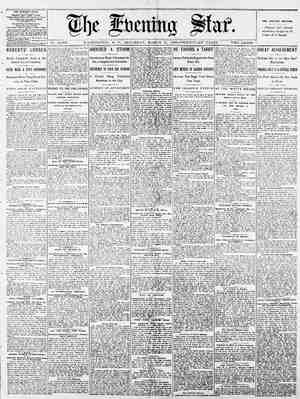Grand Rapids Herald-Review Newspaper, March 31, 1900, Page 27
You have reached the hourly page view limit. Unlock higher limit to our entire archive!
Subscribers enjoy higher page view limit, downloads, and exclusive features.
i GRAND RAPIDS, ITASCA COUNTY, MINNESOTA. 17 LOGGING IN ITASCA COUNTY. An Outline of What Has Been Done During the Winter Just Past in the Leading Logging County of the Northwest. The Itasca Lumber Company got 40,000,000 feet out, and gave employ- ment to about 600 men. About 300 horses were used on the work. The following-named companies. firms and individuals were also logging, the most of them very extensively: Shevlin-Carpenter Company, Backus-Brooks Company, Cc. A. Smith Lumber Company, Mississippi River Lumber Company, H. C. Akeley Lumber Company, Bovey-De Laittre Lumber Company, Carpenter-Lamb Company, Zimmerman & Ives, ‘Burlington Lumber Company, Pine Tree Lumber Company, Price Bros. The firm of Price Bros. employed 600 > RAPIDS IN 1900. men, about the same as the number employed by the Itasca Lumber Com- pany. The list continues as follows: Powers, Simpson & Co., Kremer & Loffberg, James Sherry, Bert Munson, John Frasier, O..J. Mellen, “J.C. Gilmore, ‘Patterson & Johnson, Pokegama Lumber Company, Buckman & Nichols, McAllister -Bros., J. H. Dunning & Co., Bonness & Howe, Hunter & Dwyer. Doran & Dewey, Hurd & MeVety, Howe & Stitt, Freeman & Gray, Milliken & McGuire, AlsoS. D. Hamilton, C. D. Lewis, P. Grandbois, R. B. Polly, Mike Gether, John Headquist, M. Lally, J. E. Taft, Louis Baldwin, Harry Oakes, Frank Green, Mike McCarthy, and many oth- ers. This is not a complete list, but it will give an idea of the extent of the logging operations that are car- ried on in Itasca county. Very large sums of money are paid out in wages, the men getting from $28 to $35 per month, besides board, and good wages are paid for teams of horses. Each spring the men go on the streams and rivers and get employment two or three months floating the logs to the mills. For this they get wages twice as high as they get in the woods. The most of the logs go down the Missis- sippi-to the mills in Minneapolis, but some are floated north down the Big Fork river to Rainy river, on the Can- adian border, thence down Rainy river to the Lake of the Woods.: A portion of the logs from the camps of Howe & Stitt will be taken over that route this spring and summer, a river dis- tance of a little more than 500 miles. PLENTY OF IRON ORE: A Very Important Industry Partly Devel- oped in Itasca County, and Destined to Much Greater Development. The fact is generally known that the world-renowned Mesabi iron range of ore bodies extends across Itasca county, and that within this county development has been begun that gives promise of great increase. The Oliver Mining Company, which was formerly known as the Diamond Min- ing Company, opened a mine some time ago twelve miles northeast of Grand Rapids, and put a big plant in, and mined many thousands of tons of ore. The Buckeye mine, another im- portant enterprise, is only eight miles from Grand Rapids. But the neces- sary railway facilities to get the ore out to market. have not been provid- ed, Grand Rapids being the nearest railroad point. Work at these mines has therefore been suspended to await railway construction, which is expect- ed to take place in the near future, and be followed by a resumption of extensive work at the mines. The ore bodies, as stated, extend through Itasca county, and cross the Mississippi river at Pokegama. falls, two and a half miles above Grand Rapids. The amount of ore in the county is very large, and the-ore is of the finest quality, as shown by tests.



